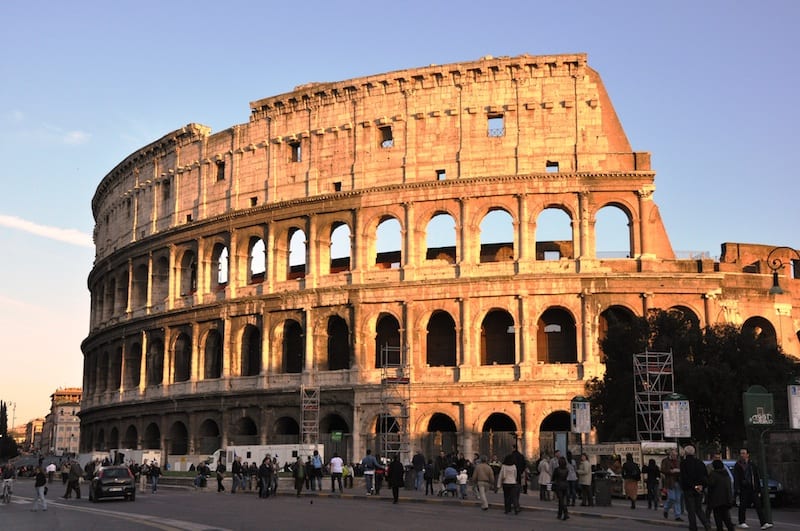
The Colosseum, An Iconic Symbol of Rome (& Tips for Visiting)
May 21, 2025
There is no more enduring symbol of Rome than the Flavian Amphitheater, aka the Roman Colosseum. It was built by the Flavian Dynasty – Emperors Vespasian, Titus, and Domition – over the course of some 25 years in the first century AD and remains the largest amphitheatre, or open-air venue, ever built. Almost 2,000 years ago it served the same purpose that amphitheatres do today – showcasing large public spectacles.
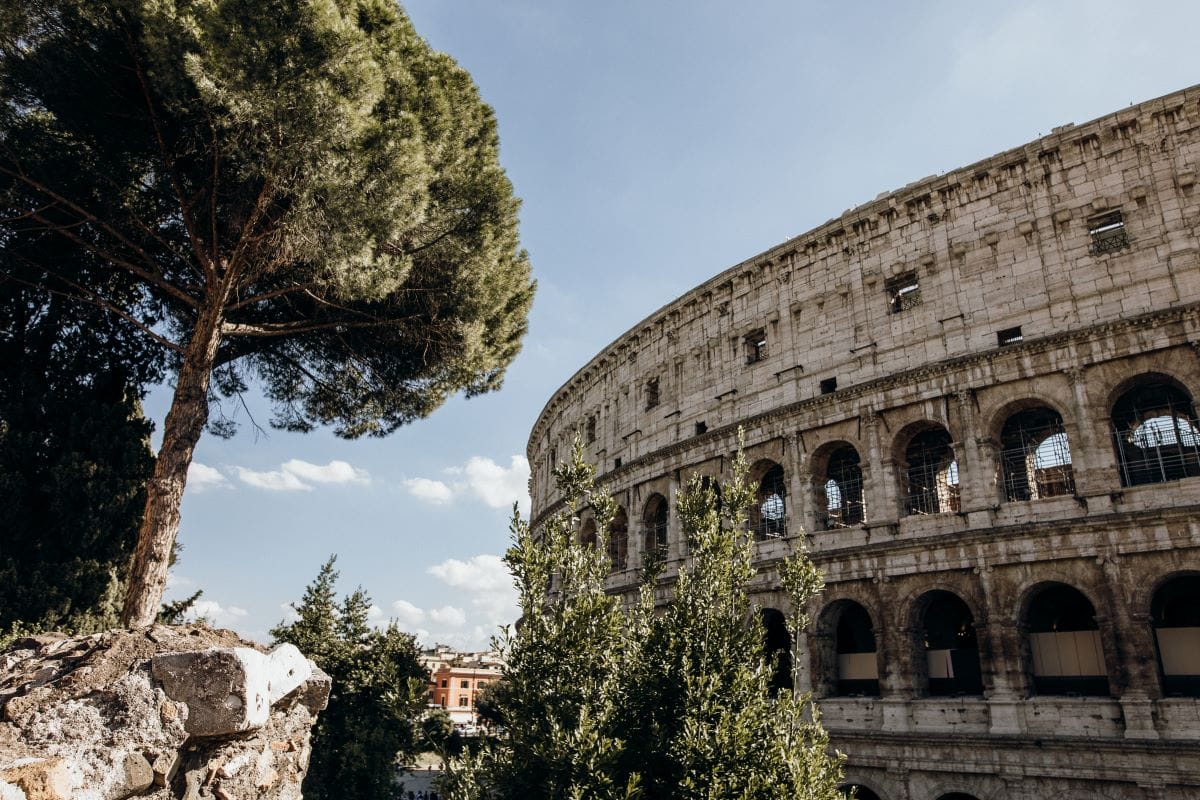
The Colosseum is one of Rome’s most remarkable landmarks.
If its purpose was modern, so too was its size and architecture. It is estimated that the ancient Colosseum could hold between 50,000 and 80,000 spectators, making it comparable in size to the Mile High Stadium in Denver and Manchester United’s Old Trafford.
It featured well-designed exits that could empty the entire venue in a manner of minutes, trapdoors in the arena floor that allowed for “special effects”, and a giant awning that protected spectators from rain. Visiting the Ancient Roman Colosseum today is to be reminded of just how similar to us humans could be in the ancient world.
Table of Contents
ToggleVisiting the Roman Colosseum: What to See
The Facade of the Colosseum
The Amphitheater’s outer wall is constructed of over 100,000 cubic meters of travertine without a single drip of concrete. Instead, the stones were bound by 300 tons of iron clamps. Today, you won’t see any iron or other metals holding the Colosseum together because it was all plundered at various points in the city’s history when metal was expensive or scarce and used to construct other buildings.
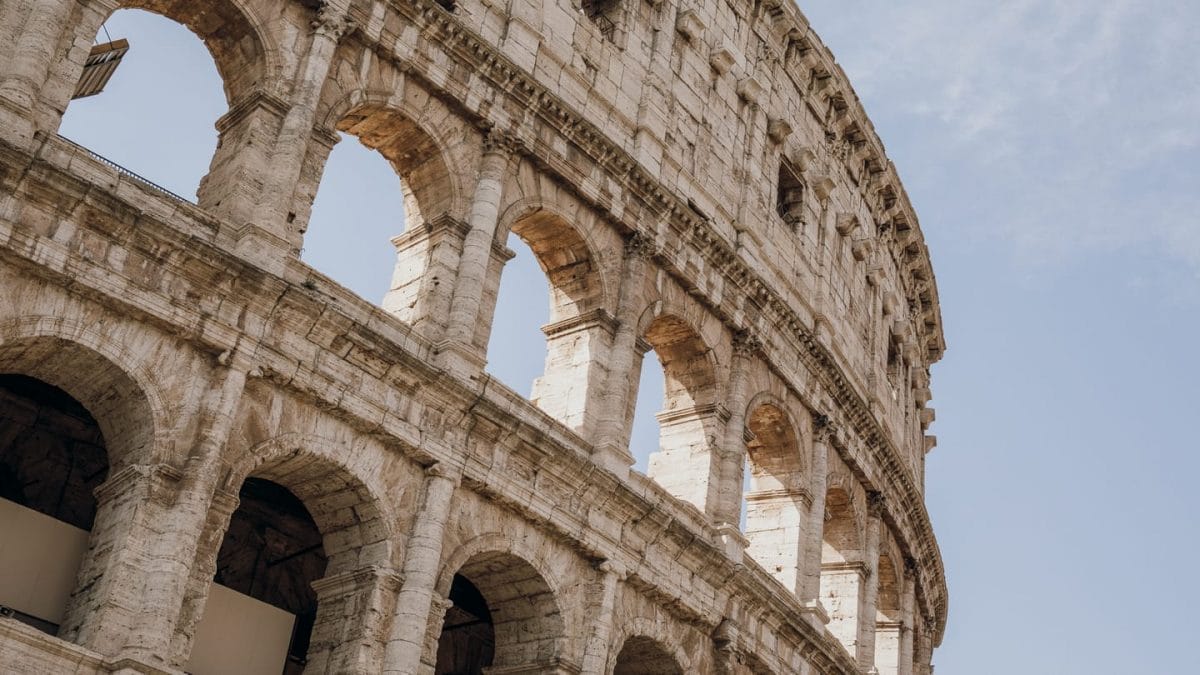
Stones were also removed and repurposed from the Colosseum after it had fallen into disuse. It had 80 entrances/exits that allowed huge groups of people to get in and out quickly. Although the grandest arches were reserved for emperors and nobility, most people would have come in and left through passages called “vomitoria” which refers in latin, to rapid discharge. Unsurprisingly, it’s also where we the english word “vomit”.
The Colosseum Underground
The first thing you’ll notice when you walk out to the floor of the Colosseum is that there is no floor. No, really. The floor was made from wooden planks probably covered with sand for traction, and nothing of it remains today. Instead, a network of cells and tunnels are exposed. They are known officially as the hypogeum, but most people just call them the Colosseum underground.
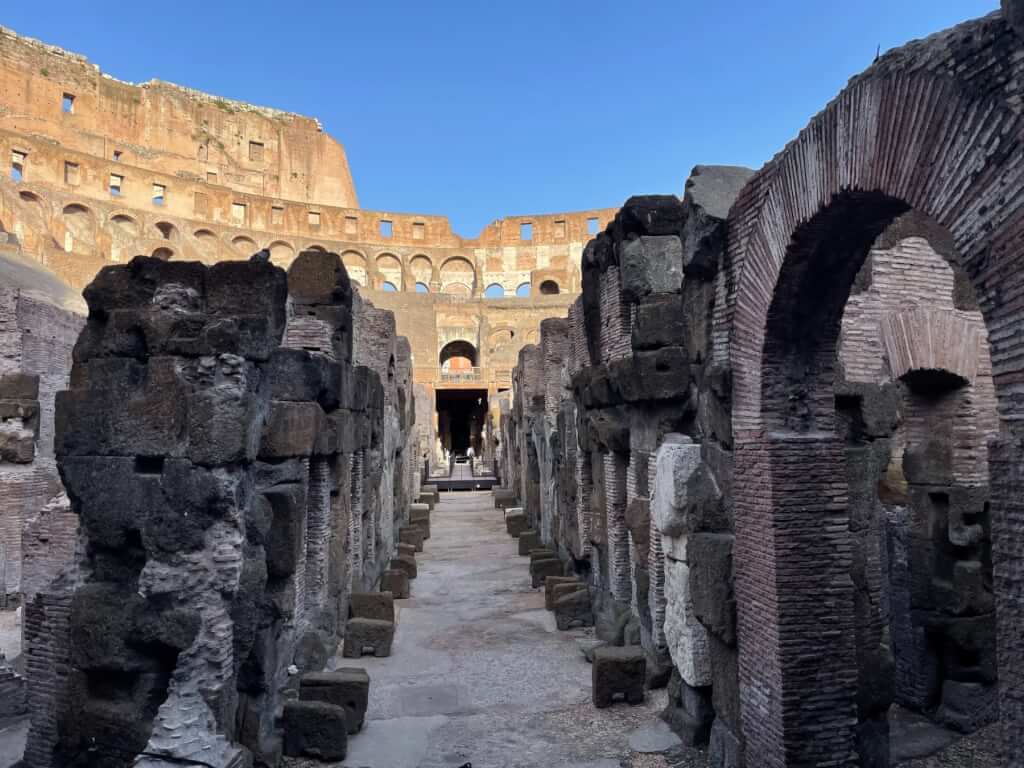
The Colosseum Underground is where gladiators were kept in waiting before their battles and also where wild animals – trapped and imported from as far away as North Africa, were imprisoned before being let out during the shows known as venationes, in which a specialized gladiator hunted them for the crowd.
Keep an eye out for areas that would have housed trap doors through which the arena floor could be raised and lowered to create crowd-pleasing effects. The exact nature of these effects have been lost to history, but the seem to have played an immensely important role in the games.
The Colossus
The Colosseum is actually named for Rome’s most famous monument that no-one has ever seen. “Colosseum” literally means “Place of the Colossus.” But who or what was this Colossus? It was an enormous bronze statue of the Emperor Nero that stood in front of the Colosseum, before eventually being torn down and melted for its metal in the lean years of the 8th century.
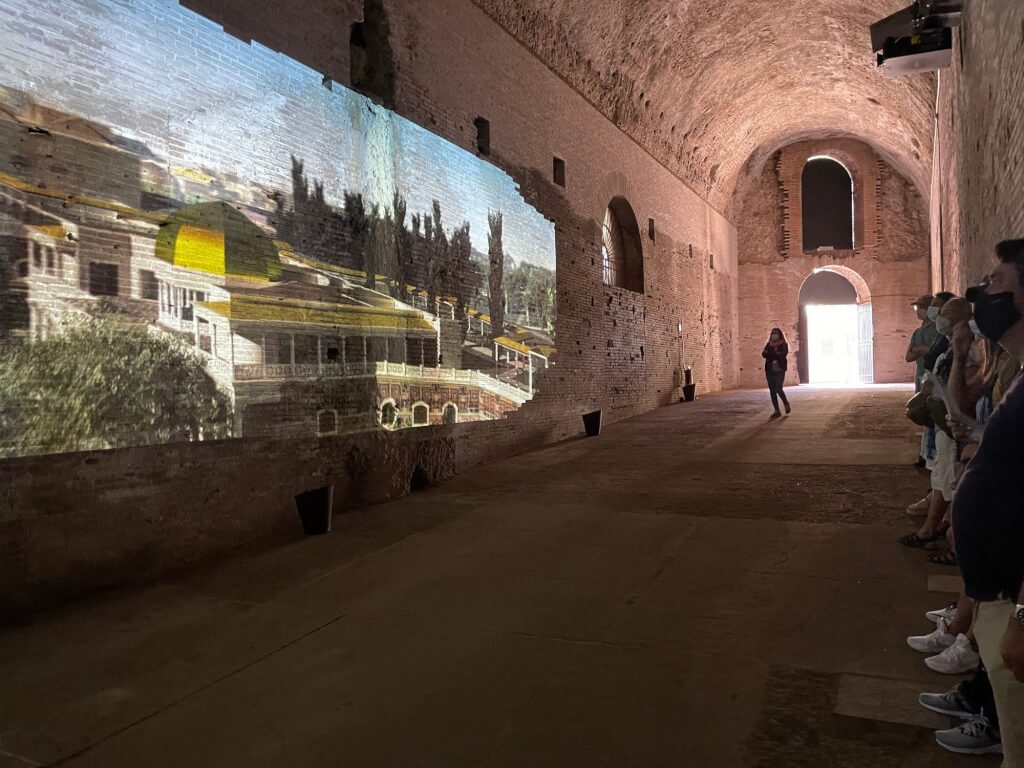
The statue originally stood at the entrance of his Domus Aurea, a 300-room pleasure complex that once dominated a large swathe of the Roman Forum. Although it (which was supposed to have risen anywhere from 30 to 35 meters and required a team of elephants to move) never sat within the Colosseum itself, it eventually sat near it and apparently transferred its name to the building.
The statue was demolished at some point during the 8th century but it was the original inspiration for the phrase: “As long as the Colossus stands, Rome will stand; when it falls, Rome will fall, too.” Originally coined by an early English writer named The Venerable Bede, the phrase was later repurposed by Lord Byron in his famous poem, Childe Harold’s Pilgrimage in order to fit the Colosseum.
Tips For Visiting the Colosseum
Opening Times
Every day: From 1st to 30th September 9.30am – 7.00pm with last admission one hour before closing time. For more details visit the Coop Culture, the official ticket office.
It is closed on December 25 and January 1.
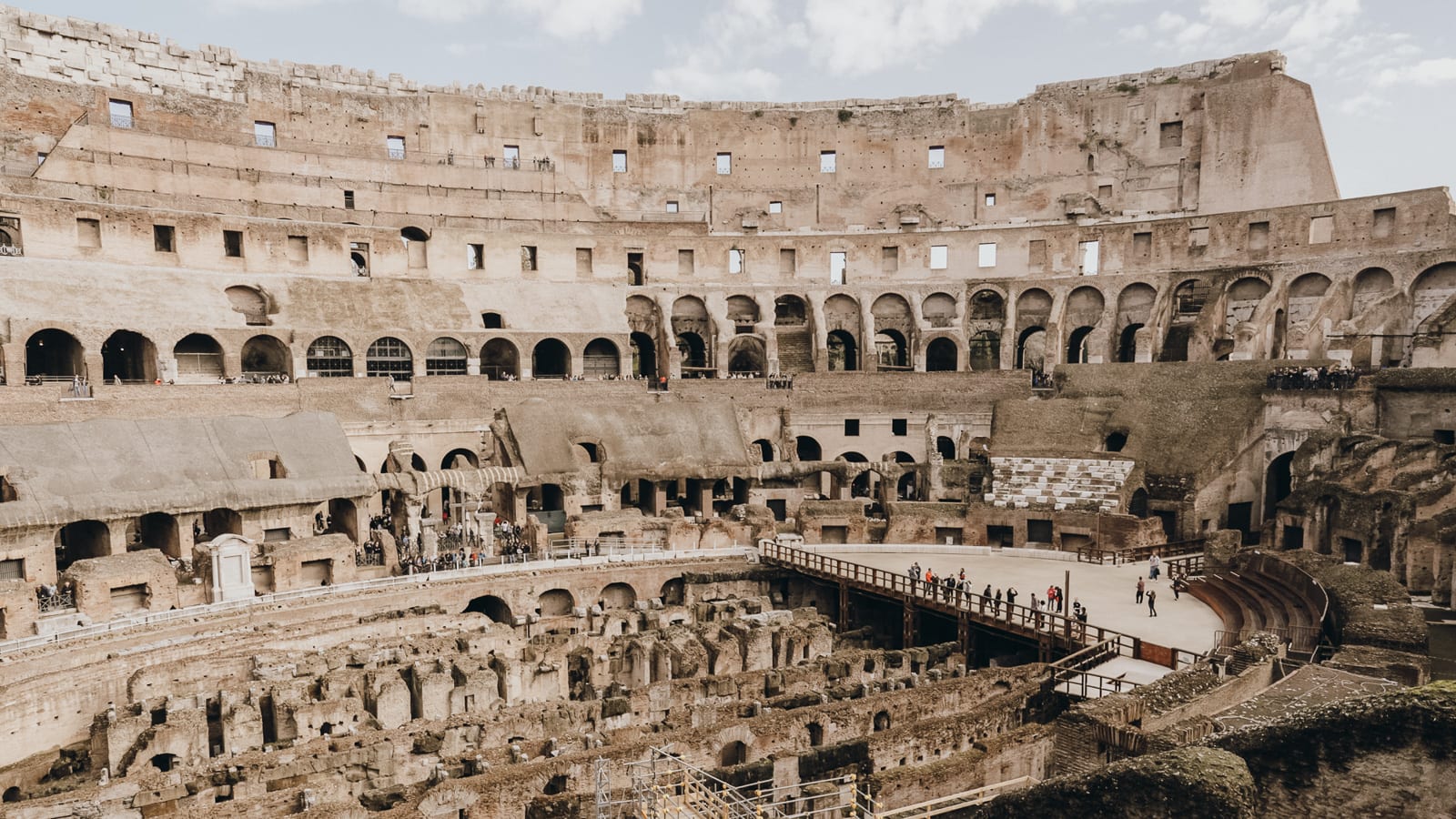
Also keep in mind that visitors can enter the Colosseum with small bags and medium sized backpacks. But any luggage, large backpacks or bulky bags are strictly prohibited. In order to enter with a bag you must open it and allow security to inspect it. Because of the security at the entrance you should always arrive 30 minutes before the reservation time specified on your ticket to the Colosseum.
The Colosseum doesn’t have particularly good elevator access. Visitors in wheelchairs should be aware of this as their visit will probably only include the ground floor of the amphitheatre.
There isn’t much in the way of plaques or supplementary info at the Ancient Roman Colosseum so if you want to really appreciate what you’re seeing, read up before hand, rent an audio guide, or go with a guided tour.
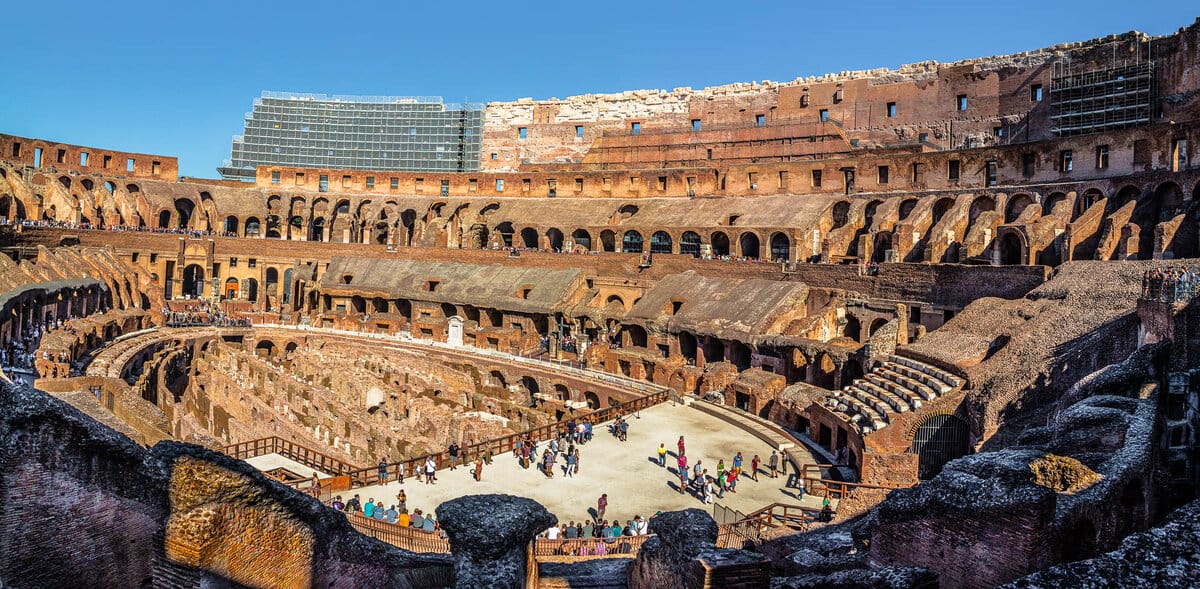
The Best Time to Visit the Colosseum
Usually the off-season, November through April, is the least crowded time to visit the Colosseum but you risk the occasional storm. A normal rain won’t close the Colosseum but because it’s an outdoor attraction (that has suffered more than a few bad lightning strikes in its nearly 2,000 years) adverse weather can and will close it for the day.
You can generally count on good weather and larger crowds in the high season and for this reason booking your ticket in advance is especially important if you’re planning to visit between May and October.
Take an expertly led guided tour
Experience the grandeur of ancient Rome with the Premium Colosseum Guided Tour including Roman Forum & Palatine Hill, a highly-rated tour that combines history, storytelling, and personalized attention. This small-group tour (capped at just 16 guests) offers skip-the-line access to the Colosseum, Roman Forum, and Palatine Hill, allowing you to explore these iconic sites without the usual crowds. Led by expert guides—often historians and archaeologists—this tour brings the ancient ruins to life with vivid stories and fascinating details. Wander through the Colosseum’s first and second levels, stand beneath the Arch of Titus in the Roman Forum, and explore the birthplace of Rome on Palatine Hill, all while enjoying crystal-clear audio with personal headsets. Whether you’re a history buff or a first-time visitor, this tour provides an unforgettable and immersive journey through the heart of ancient Rome.
Colosseum FAQ
What is the Colosseum?
The Colosseum, also known as the Flavian Amphitheater, is an ancient Roman amphitheater located in the heart of Rome. Built between 70 and 80 AD by Emperors Vespasian, Titus, and Domitian, it stands as a monumental symbol of Roman engineering and culture. Once capable of seating between 50,000 and 80,000 spectators, it hosted gladiatorial contests, animal hunts, and public spectacles.
What can I see at the Colosseum?
-
The Façade: Constructed from over 100,000 cubic meters of travertine stone, the Colosseum’s outer wall was originally held together by 300 tons of iron clamps. These metals were later repurposed for other buildings in Rome.
-
The Underground (Hypogeum): Beneath the arena floor lies a network of tunnels and cells where gladiators and animals were housed before contests. This area has been fully restored and is now accessible to visitors.
-
The Arena Floor: While the original wooden floor has long since decayed, the exposed hypogeum offers a glimpse into the complex mechanisms that powered the ancient spectacles.
When is the best time to visit?
Early mornings or late afternoons are ideal for visiting the Colosseum, as these times tend to be less crowded. Additionally, visiting during the off-peak seasons (spring and autumn) can provide a more comfortable experience.
Update notice: May 6, 2025
To delve deep into the history of the Colosseum and hear stories about lives of the gladiators with an expert guide, join our Premium Colosseum Tour, which also include visiting the Roman Forum & Palatine Hill.
by Chiara R.
View more by Chiara ›Book a Tour

Pristine Sistine - The Chapel at its Best
€89
1794 reviews

Premium Colosseum Tour with Roman Forum Palatine Hill
€56
850 reviews

Pasta-Making Class: Cook, Dine Drink Wine with a Local Chef
€64
121 reviews

Crypts, Bones Catacombs: Underground Tour of Rome
€69
401 reviews

VIP Doge's Palace Secret Passages Tour
€79
18 reviews

Legendary Venice: St. Mark's Basilica, Terrace Doge's Palace
€69
286 reviews









